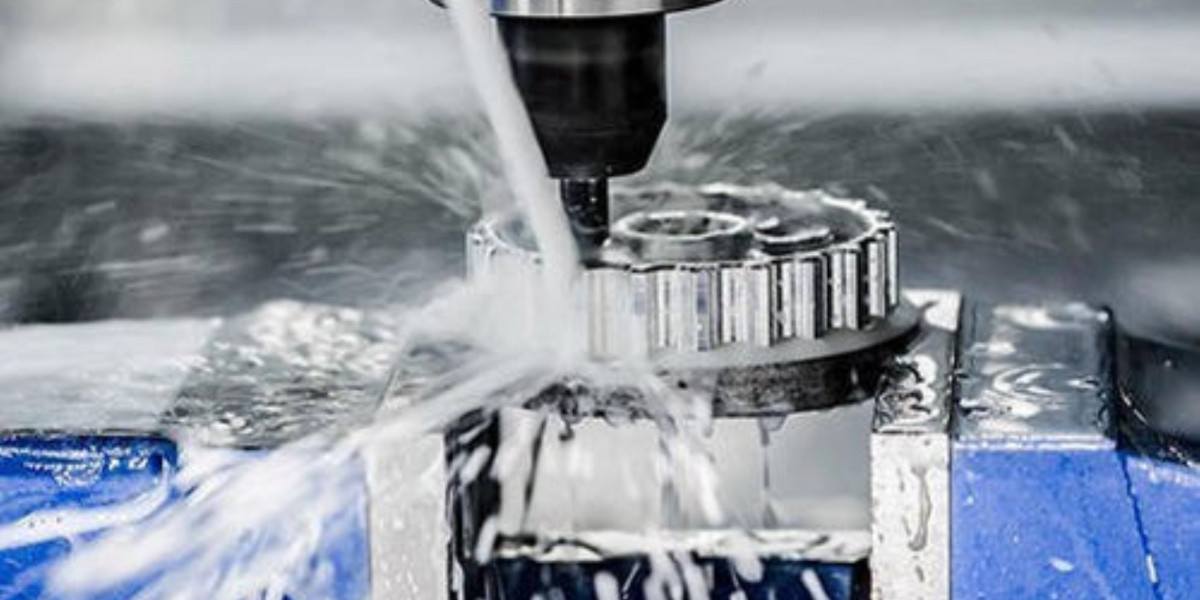The metalworking fluids (MWF) market is a dynamic and competitive industry that plays a vital role in modern manufacturing. These fluids, essential for lubrication, cooling, and cleaning during machining operations, are integral to industries such as automotive, aerospace, electronics, and heavy machinery. As manufacturing processes become more specialized and environmentally focused, the competitive landscape for MWF suppliers is evolving rapidly. For new entrants, understanding the key drivers of competition and identifying opportunities for differentiation is essential to capitalize on the market’s growth potential.
1. Key Players and Competitive Landscape
The global metalworking fluids market is characterized by the presence of both large, established companies and smaller, niche players. Major multinational corporations dominate the market, leveraging their extensive distribution networks, R&D capabilities, and long-standing relationships with industrial clients. Some of the key players in the MWF market include:
Castrol Limited (BP)
ExxonMobil Corporation
Chevron Corporation
Fuchs Petrolub AG
Quaker Chemical Corporation
Total S.A.
Shell Group
These companies have a significant presence due to their ability to provide high-performance, specialized metalworking fluids for various applications. They benefit from economies of scale, large-scale production facilities, and advanced technological capabilities to meet the demands of complex manufacturing processes.
However, alongside these industry giants, there are numerous regional and local players who specialize in customized or eco-friendly fluid formulations. These smaller companies can often offer more tailored solutions, allowing them to carve out niches in specific segments, such as biodegradable fluids, synthetic-based fluids, or fluids for advanced materials like titanium and composites.
2. Market Trends Driving Competition
Several key trends are shaping the competitive landscape of the MWF market, presenting both challenges and opportunities for new entrants:
Environmental and Regulatory Pressure: Increasing regulatory scrutiny surrounding the environmental impact of metalworking fluids has led to a growing demand for eco-friendly solutions. Biodegradable fluids, water-based fluids, and bio-based lubricants are becoming more popular, especially in industries such as automotive and aerospace. New entrants with innovative, sustainable solutions can tap into this trend to gain a competitive edge.
Technological Advancements: The growing adoption of automation, AI, and real-time monitoring systems in manufacturing is driving the need for more sophisticated and adaptable metalworking fluids. Fluids that can perform well under high-speed machining conditions and adapt to real-time environmental changes are in demand. New entrants focusing on advanced fluid formulations or integrated digital solutions for fluid management can differentiate themselves in this rapidly changing market.
Customization and Specialization: As manufacturing becomes more complex and materials more diverse, the need for highly specialized MWF formulations is increasing. Fluids tailored for specific applications, such as aerospace-grade fluids or fluids for hard-to-machine alloys, present opportunities for new companies to innovate and meet these niche needs.
3. Opportunities for New Entrants
While the competitive landscape is challenging, there are several key opportunities for new entrants to gain traction in the MWF market:
A. Focus on Eco-Friendly and Sustainable Solutions
As governments and industries push for more sustainable practices, there is a growing opportunity for new entrants to capitalize on the demand for biodegradable and low-toxicity fluids. Developing metalworking fluids that meet stringent environmental standards without sacrificing performance can position new players as pioneers in the green solutions space.
For instance, focusing on plant-based oils, synthetic fluids, and fluid recycling systems can help address environmental concerns while offering performance benefits. Additionally, ensuring that these fluids are compliant with REACH and other international environmental regulations will be crucial in gaining the trust of large, regulated industries.
B. Capitalizing on Digital Integration and IoT-Based Fluid Management
The integration of smart technologies into manufacturing processes presents a growing opportunity for new entrants to offer MWFs that are optimized through IoT sensors, AI-based fluid monitoring, and real-time data analytics. By offering smart metalworking fluids that automatically adjust to changing conditions, new entrants can appeal to manufacturers seeking efficiency, reduced waste, and optimized fluid performance.
Additionally, new entrants can partner with companies offering fluid management software to provide integrated solutions that not only improve fluid performance but also streamline procurement, storage, and disposal. Combining fluid supply with digital solutions can create a compelling value proposition for tech-savvy manufacturers.
C. Specializing in Advanced Materials and Precision Applications
Industries such as aerospace, medical device manufacturing, and electronics require high-precision machining and often work with specialized materials such as titanium, composites, and superalloys. These advanced materials pose unique challenges when it comes to lubrication and cooling during the manufacturing process, creating an opportunity for companies to develop high-performance, specialized fluids tailored to these materials.
New entrants can target these growing sectors by formulating fluids that offer superior tool life, surface finish, and heat dissipation properties. Collaborating with manufacturers in these industries to co-develop bespoke solutions can create strong business relationships and lead to significant market penetration.
D. Focus on Fluid Recycling and Reusability
Waste management is a key concern in the MWF market, and manufacturers are looking for ways to reduce the volume of fluids used while maintaining their effectiveness. New entrants can tap into this demand by developing fluid recycling technologies that allow manufacturers to reuse fluids for extended periods. Filtration systems, centrifugal separators, and purification processes that extend the lifespan of MWFs can help reduce operational costs and support sustainability efforts.
Offering recycling solutions as part of the product portfolio, along with fluid formulations that are compatible with such systems, can be a strong selling point for new entrants.
E. Strategic Partnerships and Collaborations
Forming strategic alliances with machinery manufacturers, OEMs (Original Equipment Manufacturers), and industry associations can help new entrants gain credibility and access to established distribution networks. By offering products that are specifically designed for the latest machinery or machining technologies, new players can position themselves as trusted partners in the supply chain.
Collaborating with R&D institutions and universities to explore new fluid formulations or test new technologies can also open doors to cutting-edge developments and help position new entrants as industry leaders.
4. Overcoming Barriers to Entry
While there are numerous opportunities for new entrants in the metalworking fluids market, there are also several barriers to overcome:
Capital Investment: Developing high-performance metalworking fluids requires significant investment in research and development, testing, and manufacturing facilities. For new companies, securing funding and ensuring scalability in production are key challenges.
Brand Recognition and Trust: Established companies have long-standing relationships with large industrial clients, making it difficult for new entrants to break into the market. To overcome this, new players must focus on innovation, product quality, and customer service to differentiate themselves.
Regulatory Compliance: The MWF market is heavily regulated, particularly in terms of environmental and safety standards. New entrants must ensure that their products meet the regulatory requirements in different regions and industries, which can require significant time and resources.
Conclusion
The metalworking fluids market offers substantial growth opportunities for new entrants, especially those focused on innovation, sustainability, and specialization. By capitalizing on trends such as eco-friendly solutions, digital integration, and customization for advanced materials, new players can carve out a niche in a competitive landscape. However, overcoming challenges like capital investment, brand recognition, and regulatory hurdles will be crucial for success. With the right strategies, new entrants can thrive and contribute to the evolution of this essential industry.
Read more https://www.pristinemarketinsights.com/metalworking-fluids-market-report









